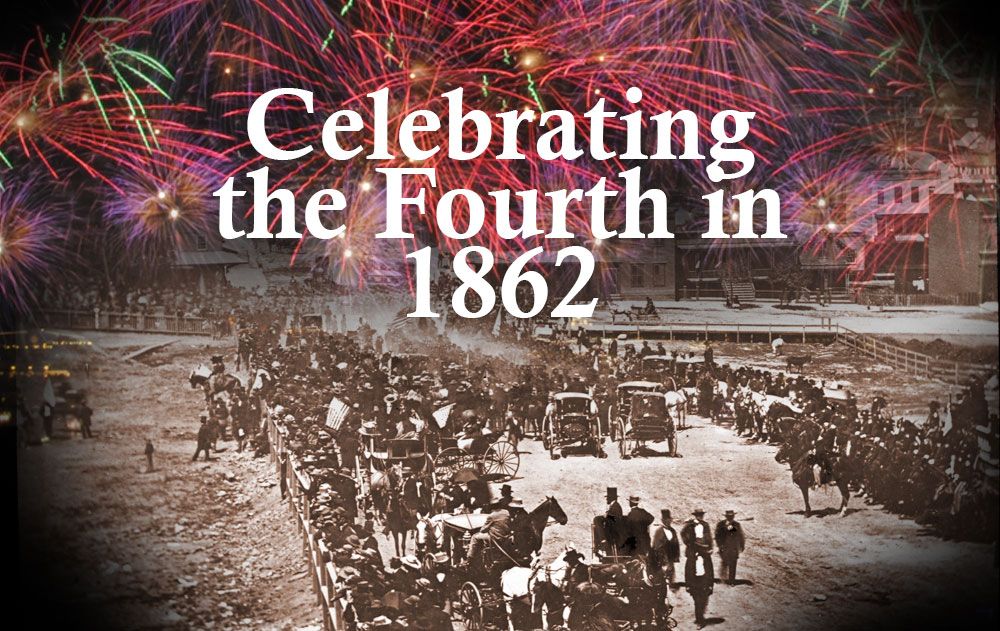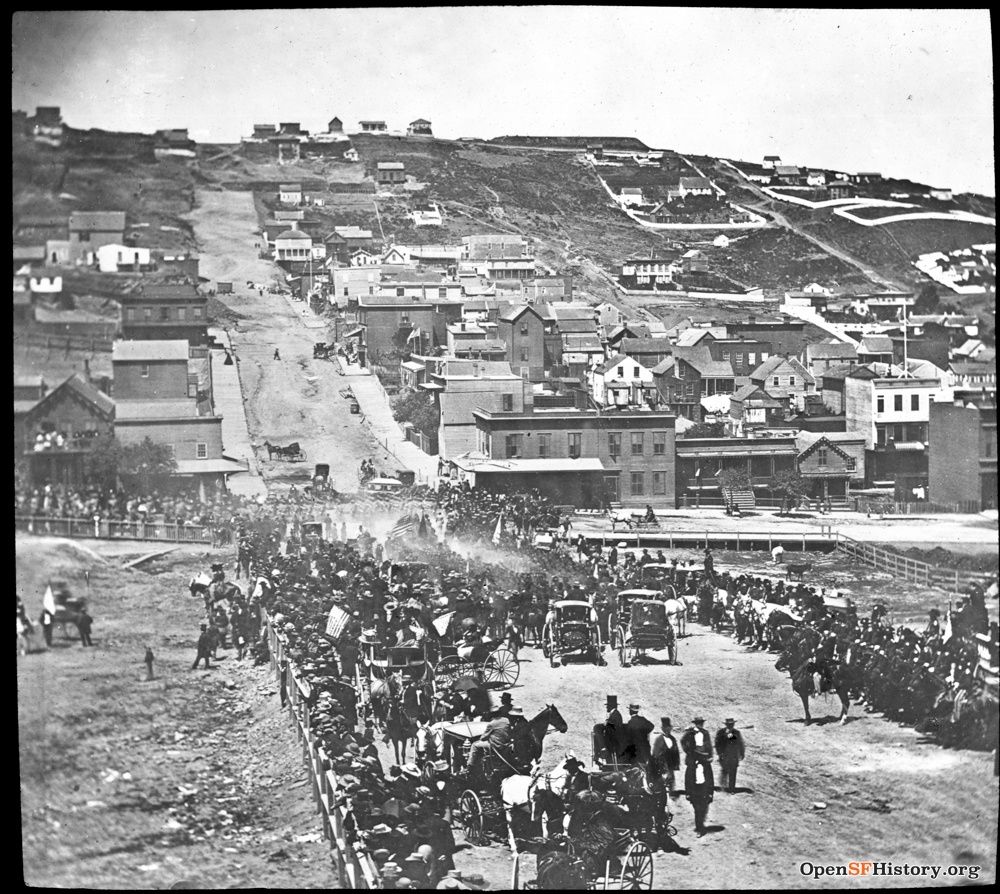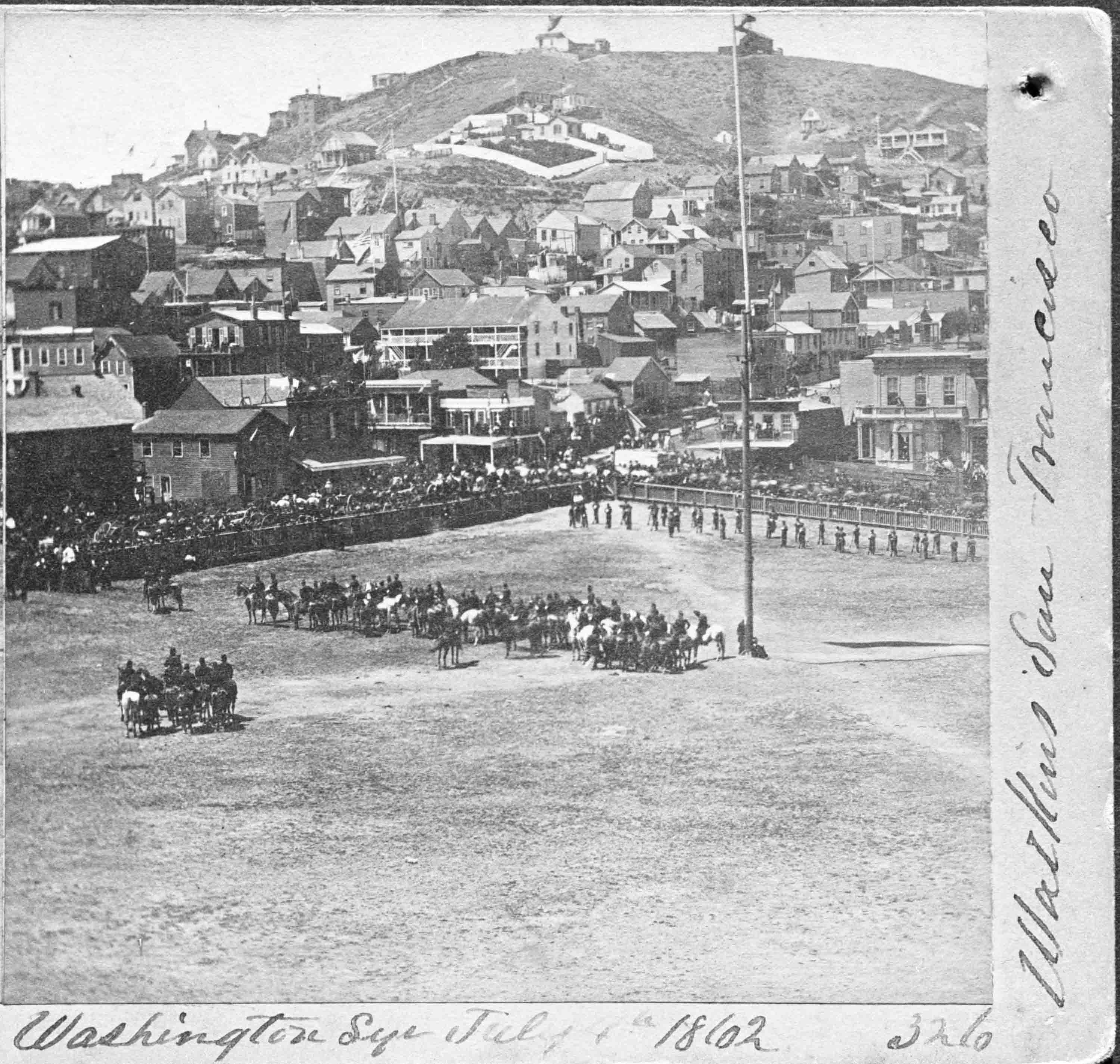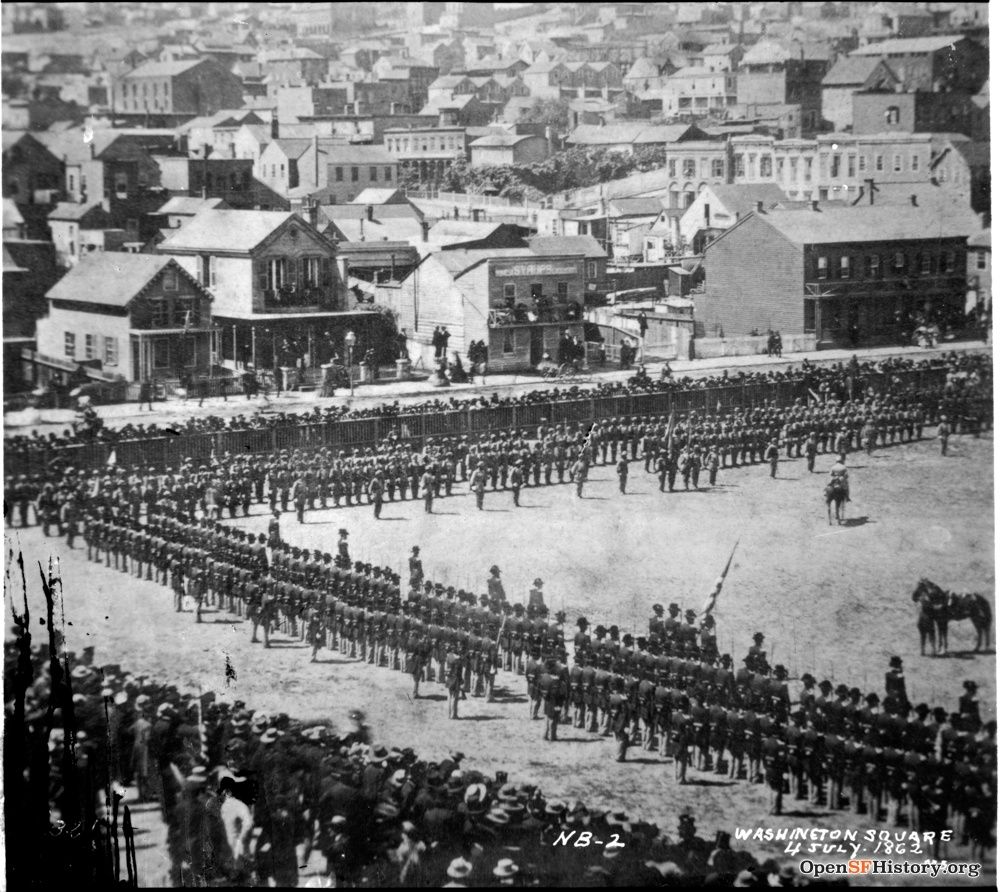Celebrating the 4th in 1862
The city turned out bright and early to celebrate Independence Day in 1862, and we have the photographs to prove it.

by Woody LaBounty
The lantern slide image below from OpenSFHistory.org has been identified in different places with different descriptions. Some notations claim it's Greenwich Street. Another called it a mourning procession after Abraham Lincoln’s assassination (I suspect the very Lincolnesque top-hatted man in the lower center may have sparked this idea.) Yet a third described it as a Fourth of July parade. All agreed this was San Francisco’s North Beach neighborhood with Russian Hill in the background.

With the help of a couple of other images, I know the where, the when, and the why. Let’s take a closer look at the crowd:

Plenty of flags, and what appear to be a regiment of men kicking up a cloud of dust. Two riders are entering the gate of a square, leading the parade. The Carleton Watkins stereoview image below of a mustering of military men at Washington Square, July 4, 1862, reveals the same fence around the square as in our scene.

Yes, the first image is definitely Filbert Street looking west up across Powell Street on Independence Day, 1862. This image was taken before the diagonal cut of Columbus Avenue (originally called New Montgomery Avenue) snipped off the southwest corner of the square. In our first image, St. Peter & Paul’s Church would be on the viewer’s right today, with the green of Washington Square on the left.
The celebration of the United States of America’s independence started early on July 4, 1862, as the San Francisco Bulletin reported:
“The booming of cannon and the ringing of pretty nigh all the bells in town, awoke the 80,000 denizens of the city from their sleep and told them that the sun, that was to shine so hotly on the Fourth, had arisen. These were joyful sounds to many, by ‘death’ to late sleepers.”
As the Civil War raged in the east, San Francisco determined to show its loyalty to the Union side. An estimated 36,000 flags hung out of the windows of homes, apartments, mercantile houses, banks, and hotels across the city. The British Consulate flew the Union Jack, which the Bulletin said was “in compliment to the day upon which, near upon 100 years ago, it was summarily ejected from so vast a domain.”
The city also wanted to show it was willing and ready to fight if need be. At 9:00 a.m., Brigadier General George S. Wright, in command of the Department of the Pacific, reviewed companies of regular and volunteer infantry, artillery, and cavalry in Washington Square. Wright rode a white charger and entered with Major General Allen. In our image, could the two men entering the square, one on a white horse, be these generals?
After exercises, review, and some rifle salutes, the soldiers led the parade out of the square at 11:00 a.m. and through the city, looping around Mission Street, and returning to participate in festivities at the Metropolitan Theater on Montgomery Street.

The parade wasn’t just for the military. Marching bands, drum corps, school children, fire engine companies, Sons of the Emerald Island, Garibaldians, the Scandinavian Society, stevedores, riggers, teamsters, and draymen all turned out with floats, wagons, and even a wheeled replica of the Union’s iron-clad warship, the Monitor.
The Butchers Association stole the show. As the Daily Alta described them: “First came one hundred on horseback, in uniform—that is, white aprons and check sleeves—and [were] followed by six yoke of fat cattle attended by seven vaqueros in full costume. Then came the slaughterers, sixteen strong on foot, armed with axes and cleavers…”
Forty carts came behind, laden with pork joints, mutton, and sides of beef on display. One of the carts had emblazoned on its side: “Pure Beef for friends of the Union—the points of our knives for its foes.”
A version of this originally appeared on OpenSFHistory.org in July 2017.
Sources
"Fourth of July," San Francisco Evening Bulletin (Supplement), July 5, 1862, pg. 1.
"Celebration of the Fourth," Daily Alta California, July 6, 1862, pg. 1.

